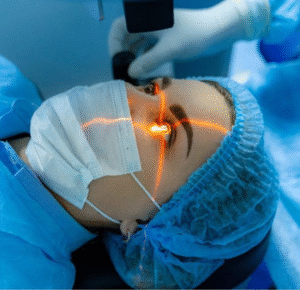1. Introduction to Hyperbaric Oxygen Therapy
Hyperbaric oxygen therapy (HBOT) involves breathing pure oxygen in a pressurized chamber. This treatment increases oxygen levels in the blood, promoting healing and fighting infection.
2. History of Hyperbaric Oxygen Therapy
HBOT has evolved since the 1600s. Initially used for decompression sickness in divers, its applications have expanded significantly over the centuries.
3. How HBOT Works
During HBOT, patients enter a pressurized chamber and breathe 100% oxygen. The increased pressure allows more oxygen to dissolve in the blood plasma, enhancing tissue oxygenation.
4. Medical Conditions Treated with HBOT
HBOT treats various conditions, including decompression sickness, chronic non-healing wounds, radiation injuries, and severe infections like gas gangrene.
5. Benefits of Hyperbaric Oxygen Therapy
HBOT offers numerous benefits: it accelerates wound healing, reduces inflammation, enhances immune response, and improves outcomes for certain infections and injuries.
6. HBOT and Wound Healing
Chronic wounds, such as diabetic foot ulcers, often respond well to HBOT. Increased oxygen levels promote the growth of new blood vessels and tissue repair.
7. HBOT for Decompression Sickness
HBOT is the primary treatment for decompression sickness, a condition affecting divers. It reduces bubbles formed in tissues and improves oxygen delivery.
8. Enhancing Recovery from Radiation Injury
Radiation therapy can damage tissues over time. HBOT helps repair these injuries by stimulating new blood vessel growth and reducing inflammation.
9. Treating Carbon Monoxide Poisoning with HBOT
HBOT is effective in treating carbon monoxide poisoning. It displaces carbon monoxide from hemoglobin, restoring normal oxygen transport in the blood.
10. HBOT in Managing Severe Infections
HBOT enhances the effectiveness of antibiotics and the immune system in fighting severe infections like necrotizing fasciitis and osteomyelitis.
11. The HBOT Procedure: What to Expect
Patients undergoing HBOT enter a hyperbaric chamber. Sessions typically last 60-90 minutes, during which they breathe pure oxygen while experiencing increased atmospheric pressure.
12. Types of Hyperbaric Chambers
Two main types of hyperbaric chambers exist: monoplace chambers, which accommodate one person, and multiplace chambers, which can treat several patients simultaneously.
13. Safety and Side Effects of HBOT
HBOT is generally safe but can cause side effects like ear discomfort, sinus pain, or temporary vision changes. Severe complications are rare.
14. HBOT in Sports Medicine
Athletes use HBOT to enhance recovery from injuries. Increased oxygen levels reduce inflammation and accelerate healing of muscles and tissues.
15. HBOT for Neurological Conditions
Research explores HBOT’s potential benefits for neurological conditions like traumatic brain injury, stroke, and multiple sclerosis, showing promising results.
16. Insurance Coverage for HBOT
Insurance coverage for HBOT varies. Many policies cover it for approved conditions like decompression sickness and chronic wounds, but not for experimental uses.
17. Contraindications for HBOT
Certain conditions contraindicate HBOT, including untreated pneumothorax and specific chemotherapy agents. A thorough medical evaluation ensures patient safety.
18. HBOT Research and Future Directions
Ongoing research investigates HBOT’s efficacy for various conditions, including Alzheimer’s disease and autism, aiming to expand its therapeutic applications.
19. Integrating HBOT with Conventional Treatments
HBOT often complements conventional treatments, enhancing their effectiveness and improving patient outcomes through synergistic effects.
20. Patient Testimonials and Success Stories
Many patients report significant improvements in their health and quality of life after undergoing HBOT, highlighting its potential benefits and success stories.
21. HBOT and Chronic Pain Management
HBOT shows promise in managing chronic pain conditions, such as fibromyalgia, by reducing inflammation and promoting tissue healing.
22. HBOT for Skin Grafts and Flaps
HBOT can enhance the survival of skin grafts and flaps by increasing oxygen delivery to compromised tissues, improving surgical outcomes.
23. Preparing for HBOT Sessions
Patients preparing for HBOT should follow specific guidelines, including avoiding certain medications and following dietary recommendations, to ensure treatment safety and efficacy.
24. HBOT Facilities and Accreditation
Choosing an accredited HBOT facility ensures high standards of care, with certified professionals providing safe and effective treatment.
25. Conclusion: The Promise of HBOT
Hyperbaric oxygen therapy offers a promising treatment for various medical conditions. Its ability to enhance healing, fight infections, and improve patient outcomes makes it a valuable addition to modern medicine.



